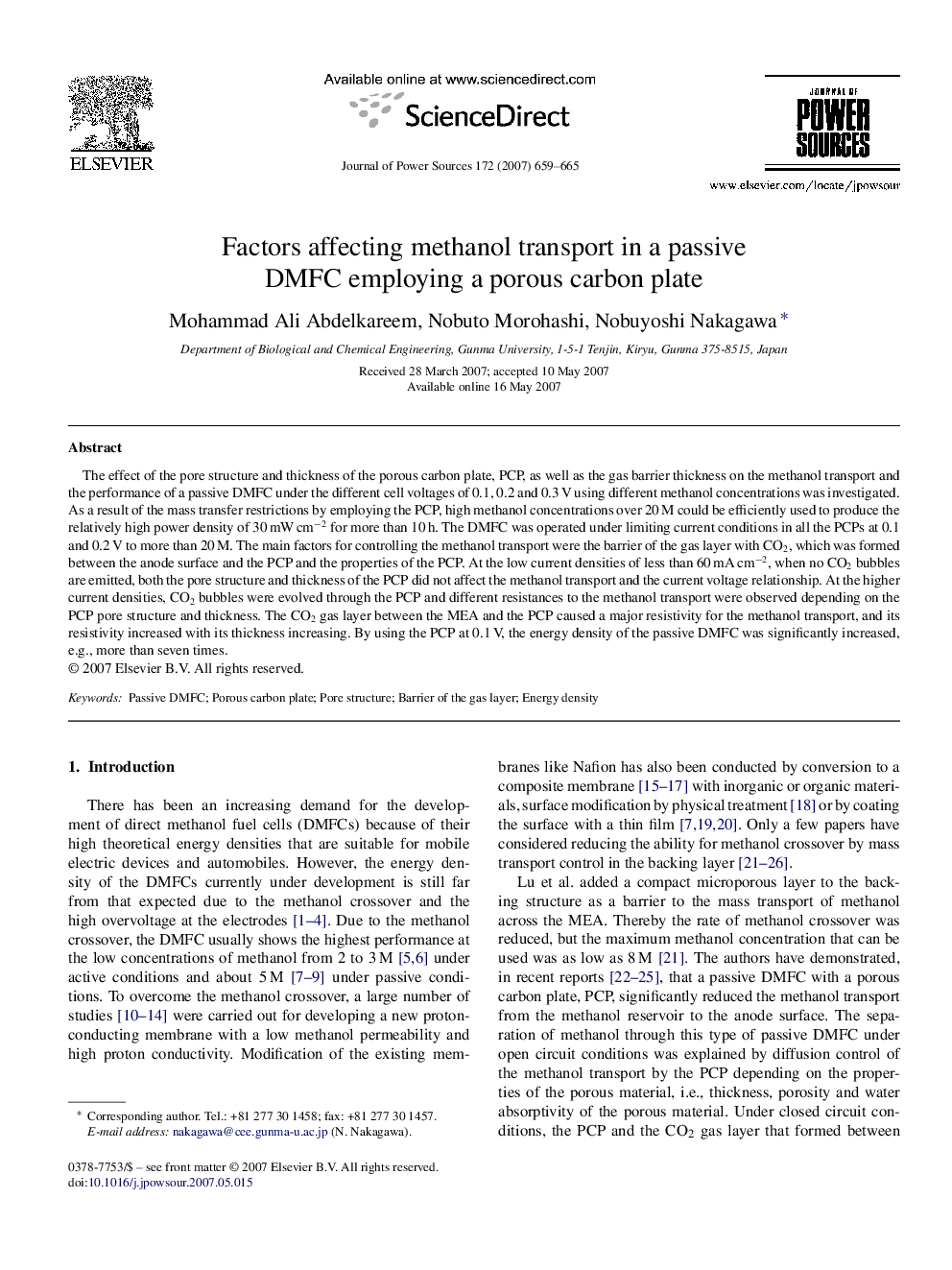| کد مقاله | کد نشریه | سال انتشار | مقاله انگلیسی | نسخه تمام متن |
|---|---|---|---|---|
| 1286185 | 973179 | 2007 | 7 صفحه PDF | دانلود رایگان |

The effect of the pore structure and thickness of the porous carbon plate, PCP, as well as the gas barrier thickness on the methanol transport and the performance of a passive DMFC under the different cell voltages of 0.1, 0.2 and 0.3 V using different methanol concentrations was investigated. As a result of the mass transfer restrictions by employing the PCP, high methanol concentrations over 20 M could be efficiently used to produce the relatively high power density of 30 mW cm−2 for more than 10 h. The DMFC was operated under limiting current conditions in all the PCPs at 0.1 and 0.2 V to more than 20 M. The main factors for controlling the methanol transport were the barrier of the gas layer with CO2, which was formed between the anode surface and the PCP and the properties of the PCP. At the low current densities of less than 60 mA cm−2, when no CO2 bubbles are emitted, both the pore structure and thickness of the PCP did not affect the methanol transport and the current voltage relationship. At the higher current densities, CO2 bubbles were evolved through the PCP and different resistances to the methanol transport were observed depending on the PCP pore structure and thickness. The CO2 gas layer between the MEA and the PCP caused a major resistivity for the methanol transport, and its resistivity increased with its thickness increasing. By using the PCP at 0.1 V, the energy density of the passive DMFC was significantly increased, e.g., more than seven times.
Journal: Journal of Power Sources - Volume 172, Issue 2, 25 October 2007, Pages 659–665